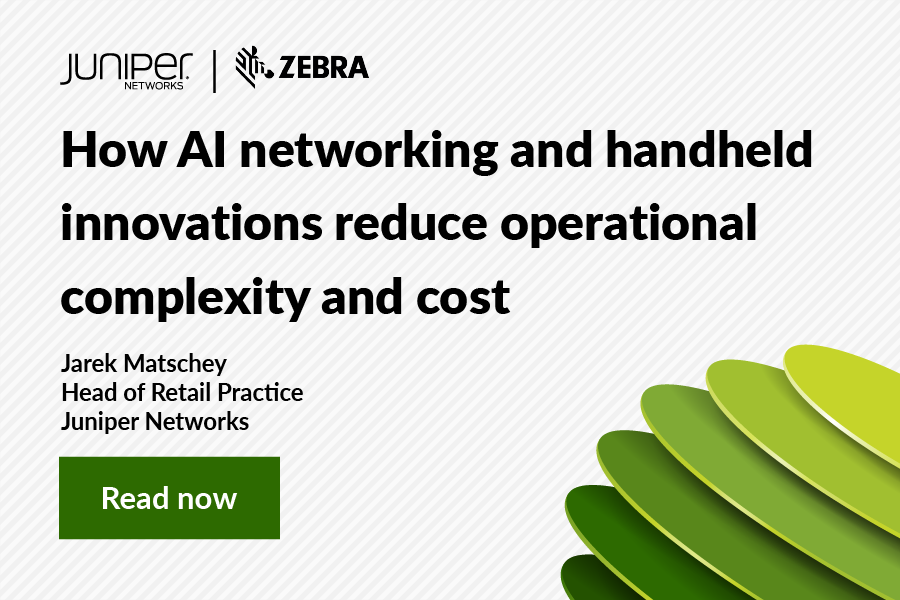If someone had asked the question, ‘What’s on the horizon for the channel in 2022?’ at this time two years ago, the answer would be very different than it is today. This perspective truly brings to light how extreme the shifts in the function of our economies and societies have been. Every day, the channel landscape continues to evolve and transform in answer to the changes brought about by the pandemic. Today, we’re still finding our feet on the new ground on which we stand.
Contemplating what’s on the horizon for the channel in 2022 is tricky, as we can surely all agree that one lesson the pandemic has taught us is that we can only predict so much in what is an unpredictable world. However, we can say with some certainty that the following trends, which Juniper Networks has seen evolve in the channel space over 2021, will continue to develop into the New Year.
1. More Adoption of Anything-as-a-Service Solutions
The already-growing subscription economy was further accelerated by the pandemic, as many resellers have been encouraged to transform their sales offerings from standalone products to fully comprehensive packages of solutions, tools and technologies. Adjacent to this shift is the coinage of the term ‘anything-as-a-service’ (XaaS) in the IT sector. This recognises the solutions that vendors deliver to users as-a-service over private or public networks. Many vendors are lessening their focus on hardware and are selecting offerings such as cloud computing models including software-as-a-service, infrastructure-as-a-service and, in the networking industry specifically, network-as-a-service (NaaS).
According to Gartner®, Inc., on-premises NaaS is expected to be adopted by 15 percent of all enterprises by the end of 2024.[1]
With this level of extensive adoption by enterprises, , vendors and resellers alike should grasp the opportunity that the XaaS model has to offer with zeal. For managed service providers (MSPs), the opportunity is particularly potent, as they can work with vendors to provide a broad range of solutions to customers as-a-service. MSPs should aim to collaborate with vendors who can offer a fully packaged service of cutting-edge technology, considered technical support and advice, as well as outstanding experience-driven results and customer outcomes.
2. Remaining on (Hybrid) Cloud Nine
As a result of the pandemic, increased—or maybe enforced—operational flexibility has become more prevalent, meaning that having more choice in how and where individuals work is now an accepted, even expected, requirement in society. As remote working continues to be widespread, plus the expected creation of enterprise ‘microbranches’ longer term, it’s increasingly compelling for vendors to provide their resellers with solutions that are as secure, simple and effective as possible for IT teams to manage. Throughout the past two years, organisations have had to be able to scale up and down quickly, efficiently and cost-effectively in answer to sudden national lockdowns and changing work patterns. Hybrid cloud models can enable these fluctuations to be much more easily integrated into an organisation’s day-to-day operations.
These models are ideal for enterprises that want to move to the cloud, but which have significant investments in physical data centres. Hybrid cloud models allow them to leverage the flexibility and economics of public cloud while retaining the required control. Furthermore, some enterprises are legally required to hold certain data on premise: a hybrid approach allows extremely sensitive data to be stored in private data centres while offloading the rest to the cloud, maintaining overall compliance.
That said, migrating to a hybrid cloud has the potential to be a confusing process for those enterprises without previous experience. This is where the opportunity lies for an MSP, who can act as a point of contact and trusted guide for the customer through the process of adopting a hybrid cloud model. An MSP can assist with setting up new security policies for the public cloud deployment, managing the data between the two environments, to avoid confusion between which data should be stored at the physical data centre and which on the cloud. This eliminates the complexity for the customer and means they can reap the true technological, operational and financial benefits of hybrid cloud.
3. Automation, Automation, Automation
It is almost too obvious to call out automation as a trend, as it has become increasingly commonplace across all verticals. But, as agility continues to be the watchword of the IT sector, automation and particularly artificial intelligence (AI) will continue to play a huge role moving forward. Importantly, the adoption of AI has proven to be one especially effective way of achieving the support needed for both remote and office-based employees throughout the pandemic – particularly, AI for IT operations (AIOps).
AIOps is a gamechanger in the networking industry: helping enterprises manage end-to-end user connectivity experience. It’s the convergence of data science and customer support, which makes it the ideal solution to address the growing complexity of IT operations. The technology helps IT departments anticipate and solve problems in a cost-efficient way, usually before end-users are impacted. With automation and machine-learning (ML) capabilities, AIOps solutions can quickly and effectively discover (and in many cases, solve) the root cause of hundreds of connectivity problems from various microbranches.
AIOps solutions are therefore a significant value-add technology for partners to offer their customers. Furthermore, vendor-agnostic AIOps strategies that ingest data from multiple sources allow IT departments to quickly isolate poor user experience and realise significant time and cost savings, not to mention improving user loyalty and brand reputation.
Beyond the Horizon
In the face of the pandemic, the IT industry and the channel that supports it has confronted numerous challenges – helping many companies survive mass migrations to remote working, as well as bringing to life the modernisation, digitalisation and transformation ambitions of others.
On the cusp of 2022, we can see that resellers have abundant opportunity to distinguish themselves in the enterprise space. To achieve this, they should embrace the growing trends of XaaS, automation and hybrid cloud. Juniper can help resellers provide customers with experience-led IT operations that power connections and simplify user engagement wherever and whenever possible in 2022 and beyond.
[1] Gartner Inc., ‘What Is NaaS, and Should I Adopt It?’ By Jonathan Forest, Ted Corbett 25th October 2021


